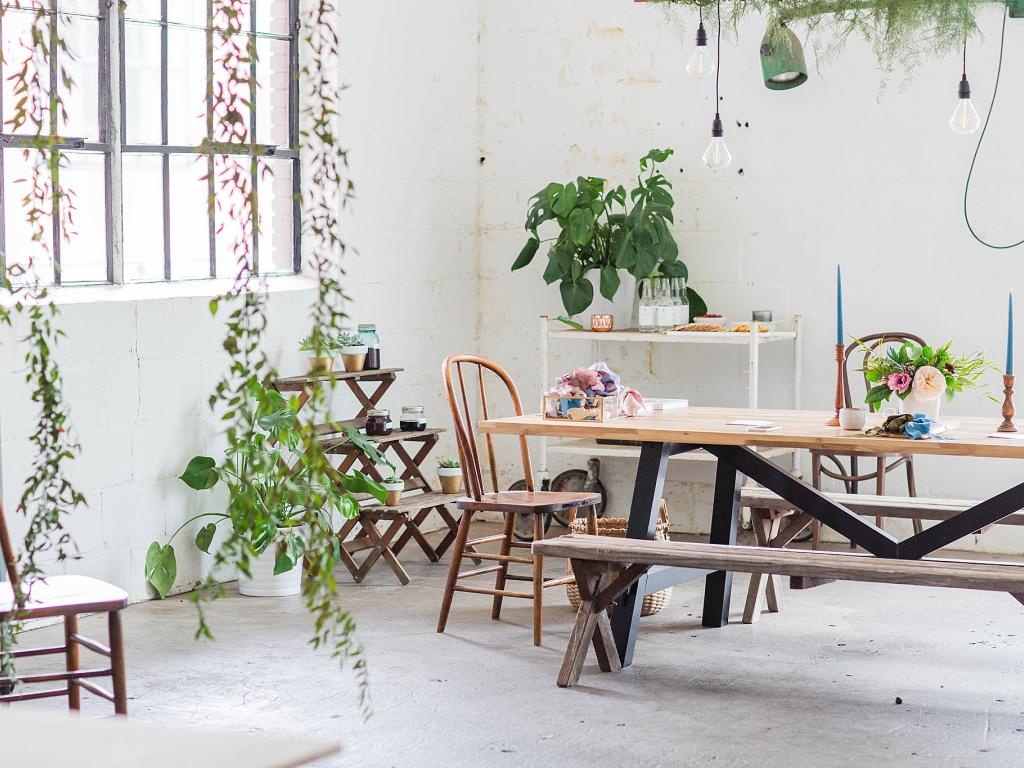

If ever you’ve been tasked with sourcing ribbons for bouquets, gift wrapping, attire, or anything else, you know what a challenge it can be to find just the right colors in a fabric that’s display worthy. Silk ribbons are particularly hard to come by, and calligrapher Shasta Bell knows all about that dilemma. While working in invitation design, she realized how tough it was to find beautifully hued silk ribbons, so she started hand dyeing her own using natural botanical and plant-based dyes.
Fast-forward a few handmade dye recipes later, and Miss Bell developed a workshop for lovers of naturally colored silk ribbon to get together and learn her tricks of the trade. Documented by photographer Kristen Dyer (aptly named, no?), the event took place at Fisk Collab in Minneapolis. We can’t believe what vivid colors she was able to create using berries, plants, flowers, avocados, and the like. Jump below for the full scoop on natural dyes from Shasta and to take a peek at the photos by Kristen.
Words by Shasta Bell, Photography Kristin Dyer

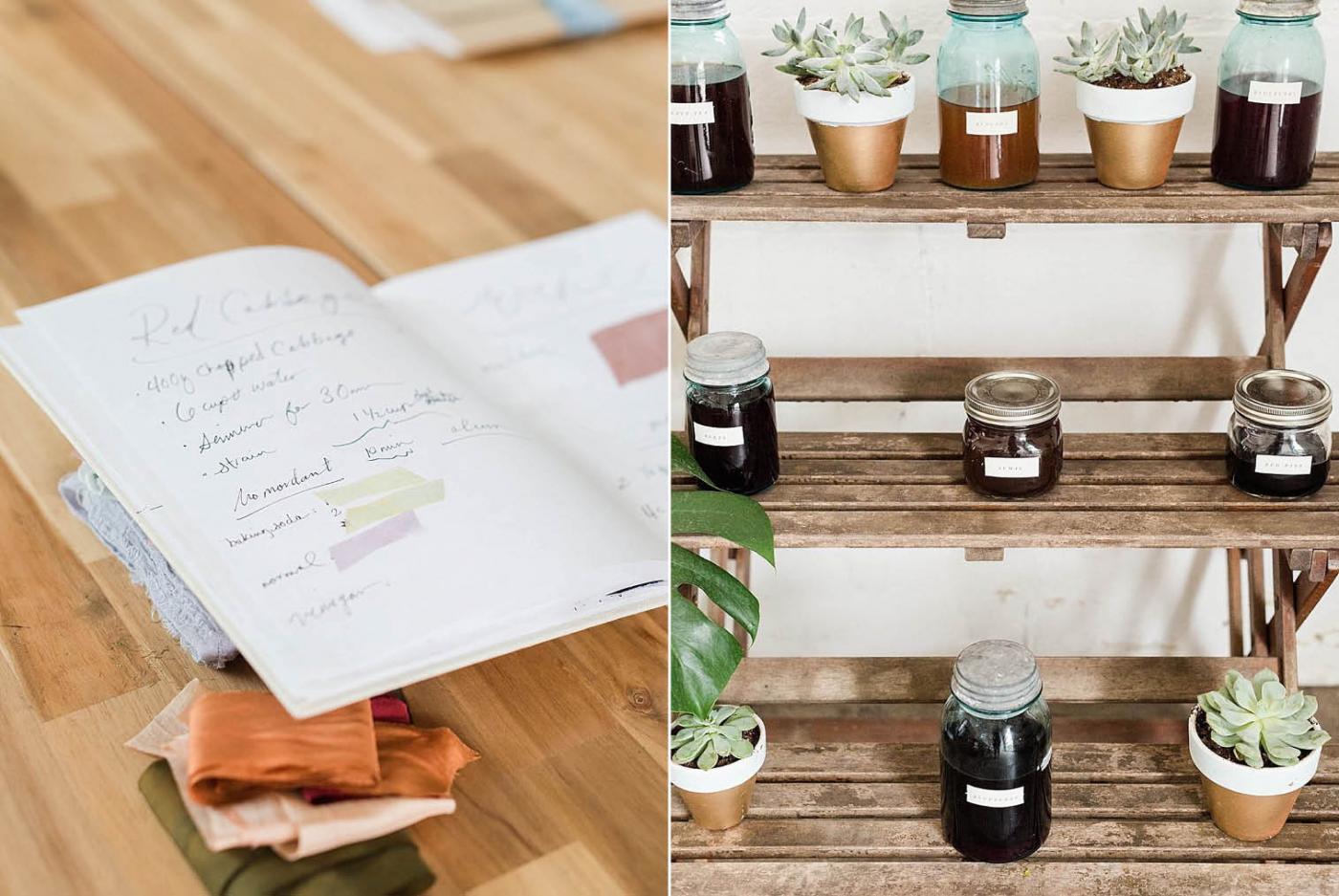
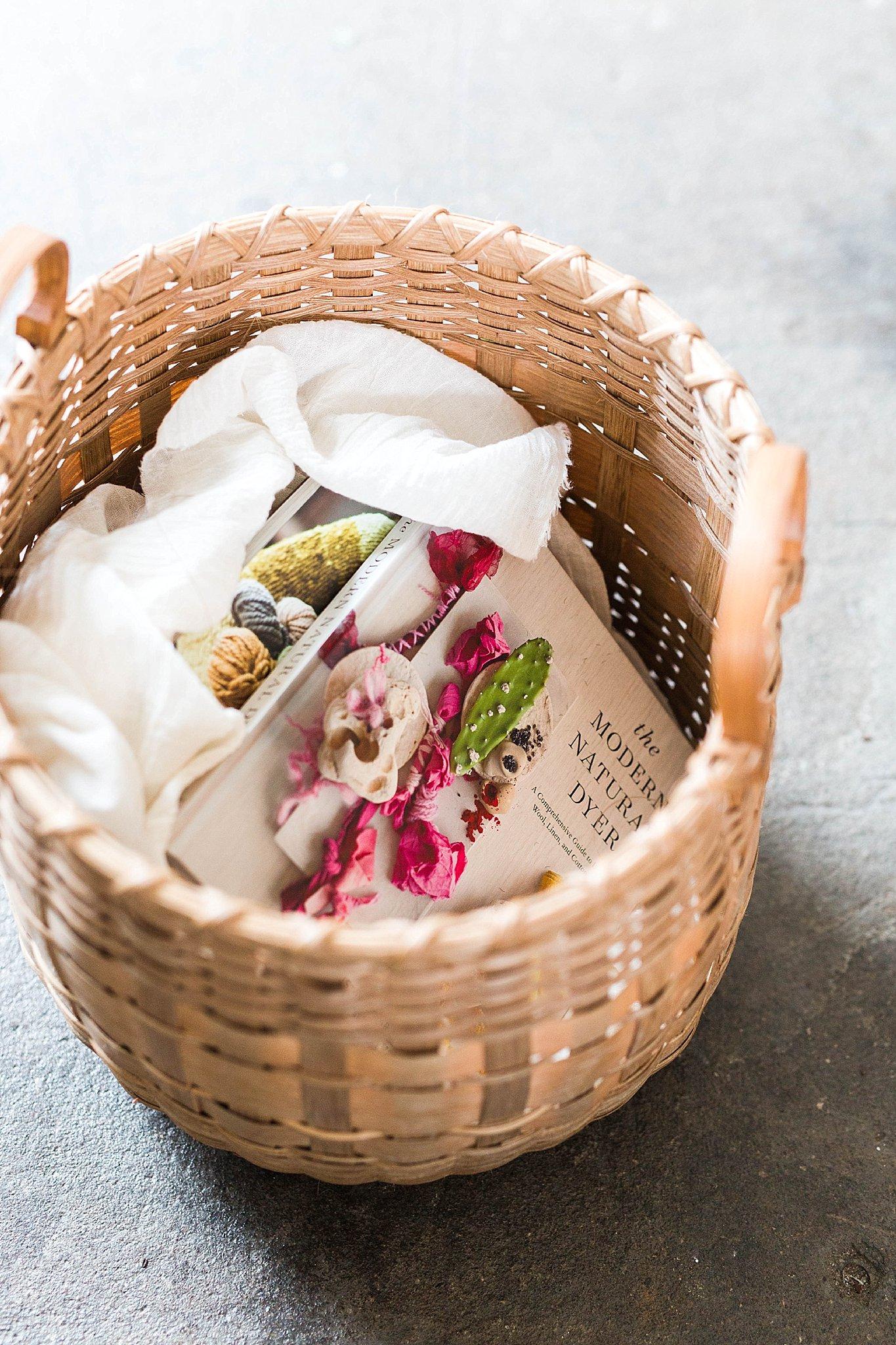
Tell us about you and your business!
Shasta Bell Calligraphy began while I was living in West Africa in 2013-2014. I was an avid home sewer, but I couldn't take my sewing machine with me to the village I was living in. Yet, the creative bug in me needed an outlet, and I began sketching and hand lettering in a little notebook. I fell in love with this new medium and when I returned stateside, I opened my calligraphy shop and began addressing envelopes and designing invitation suites. Many of my brides were interested in incorporating ribbon into their suite design but it was difficult to find ready-made ribbon that matched the soft, organic aesthetic I loved so much. So, I decided to make my own and set off to learn natural dyeing. I was immediately attracted to creating colors from foraged, chemical-free materials - walnuts, avocado pits, black tea, blackberries & blueberries...the list goes on. Soon, I not only began offering these botanically dyed beauties to my stationary clients, but also selling them publicly on my website to florists, photographers, and other calligraphers.
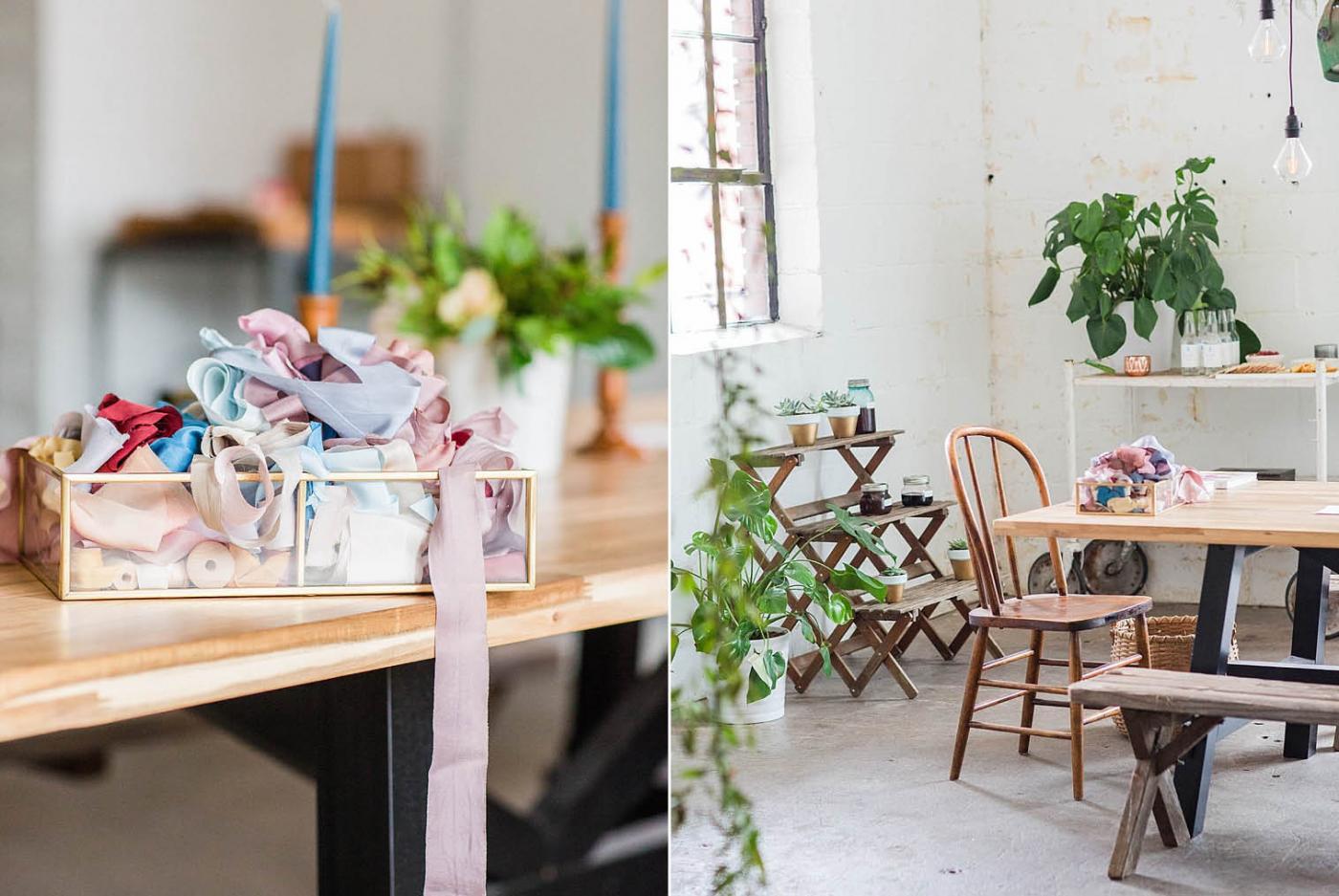
What inspired you to host the ribbon dyeing workshop?
Many of my colleagues in the Minneapolis wedding industry were intrigued by what I was doing with natural dyeing and kept asking me how I did it. I used to invite friends over to my kitchen to watch me stir pots and boil fruit, and realized there were many people interested in this craft. I absolutely love teaching, there is something deep in my bones that delights in helping someone learn something new. Since I already teach monthly calligraphy workshops, a "ribbon dyeing" workshop was a natural extension what we were already doing.
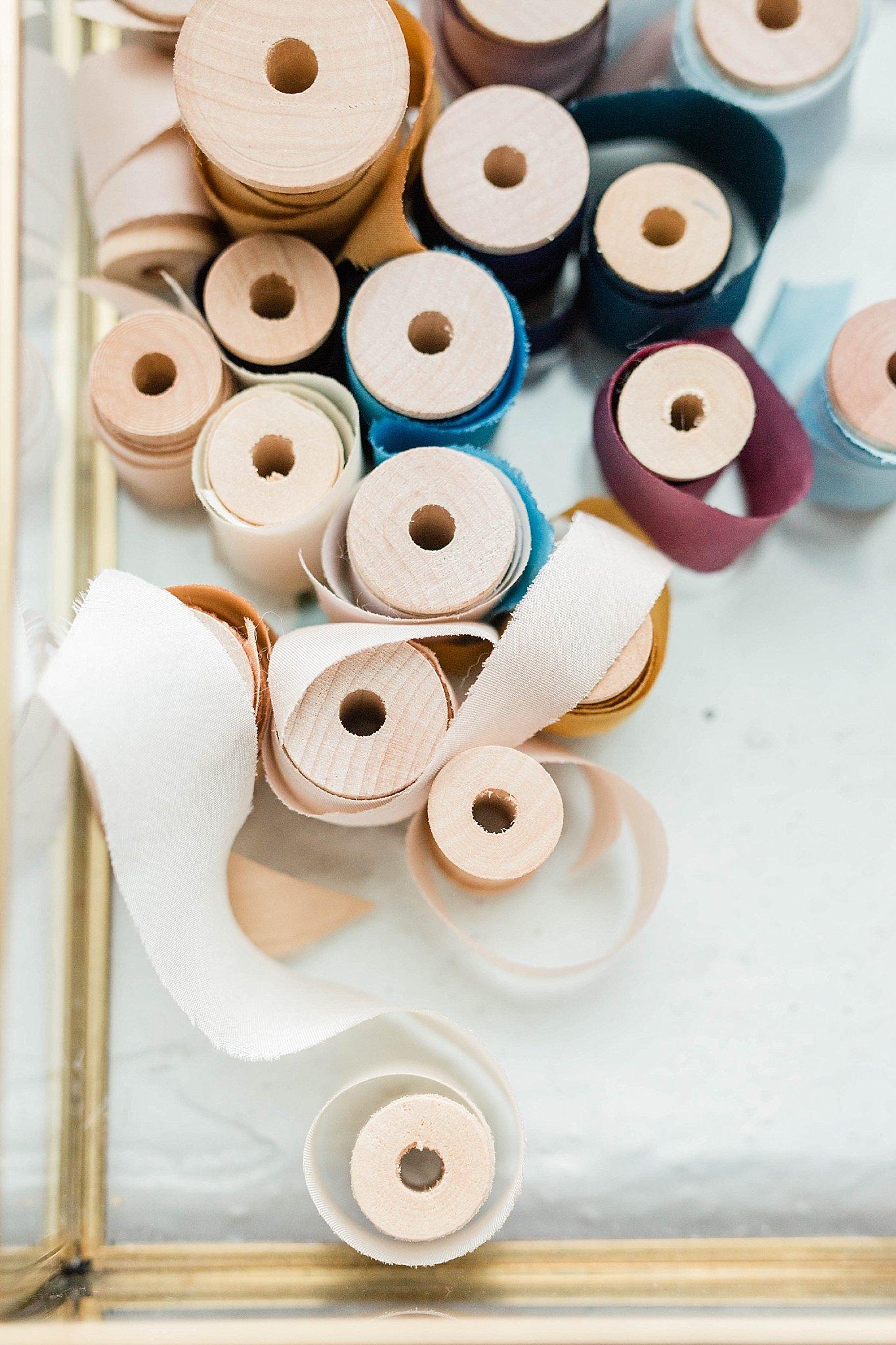
Where was the workshop hosted?
The Fisk Collab, Minneapolis - This is a studio space I share with other wedding creatives in Minneapolis.
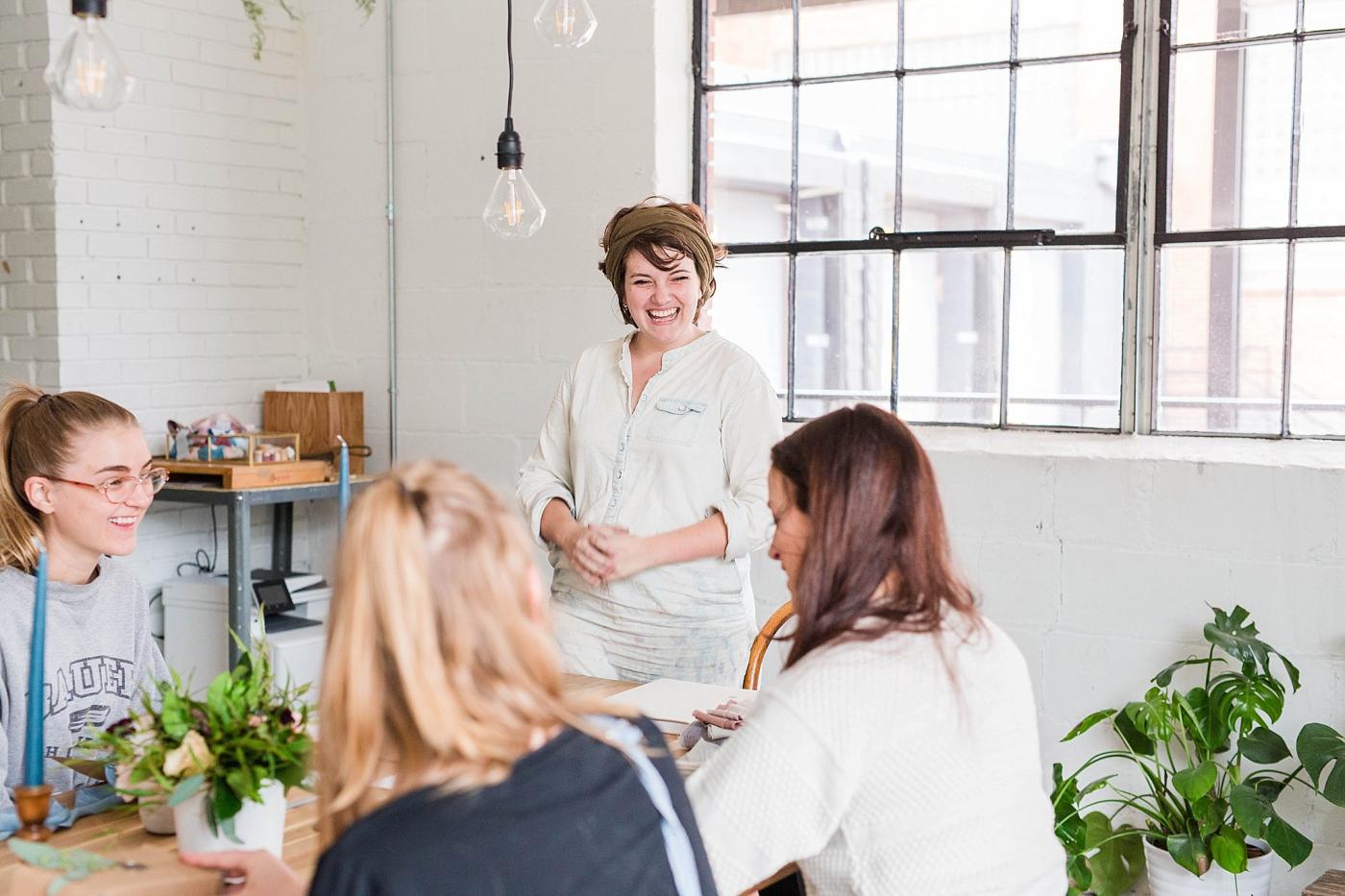
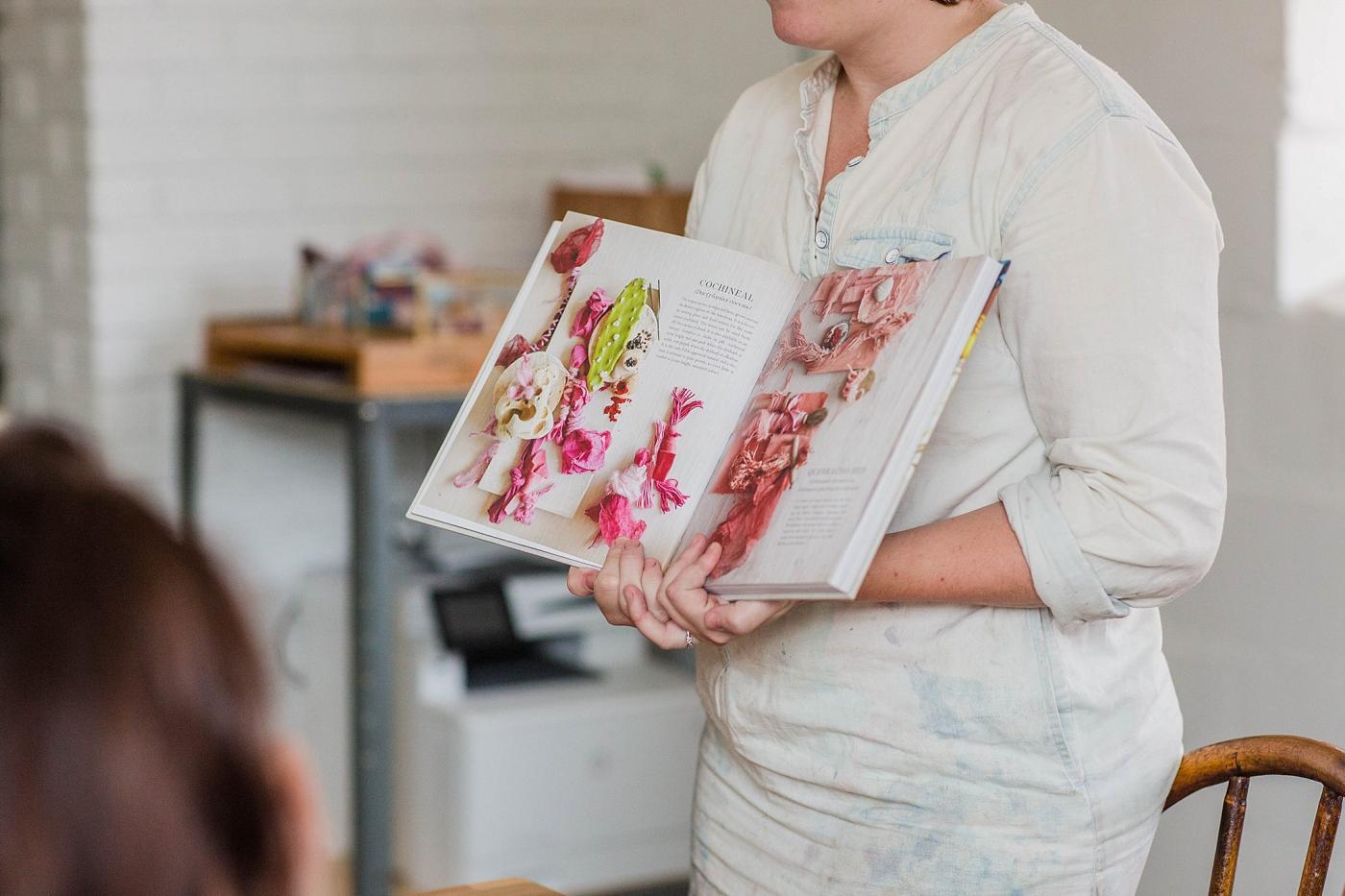
What did you teach the attendees?
During the workshop, students learned which fruits and plants are best for dyeing, how to calculate & extract dyes, how to prepare fabric, how different fabrics affect dye colors and how to produce beautiful colors without harsh chemicals. During the class, each student worked with pre-prepared natural dyes, learned basic dyerecipes, and went home with their own spools of freshly dyed silk ribbons.
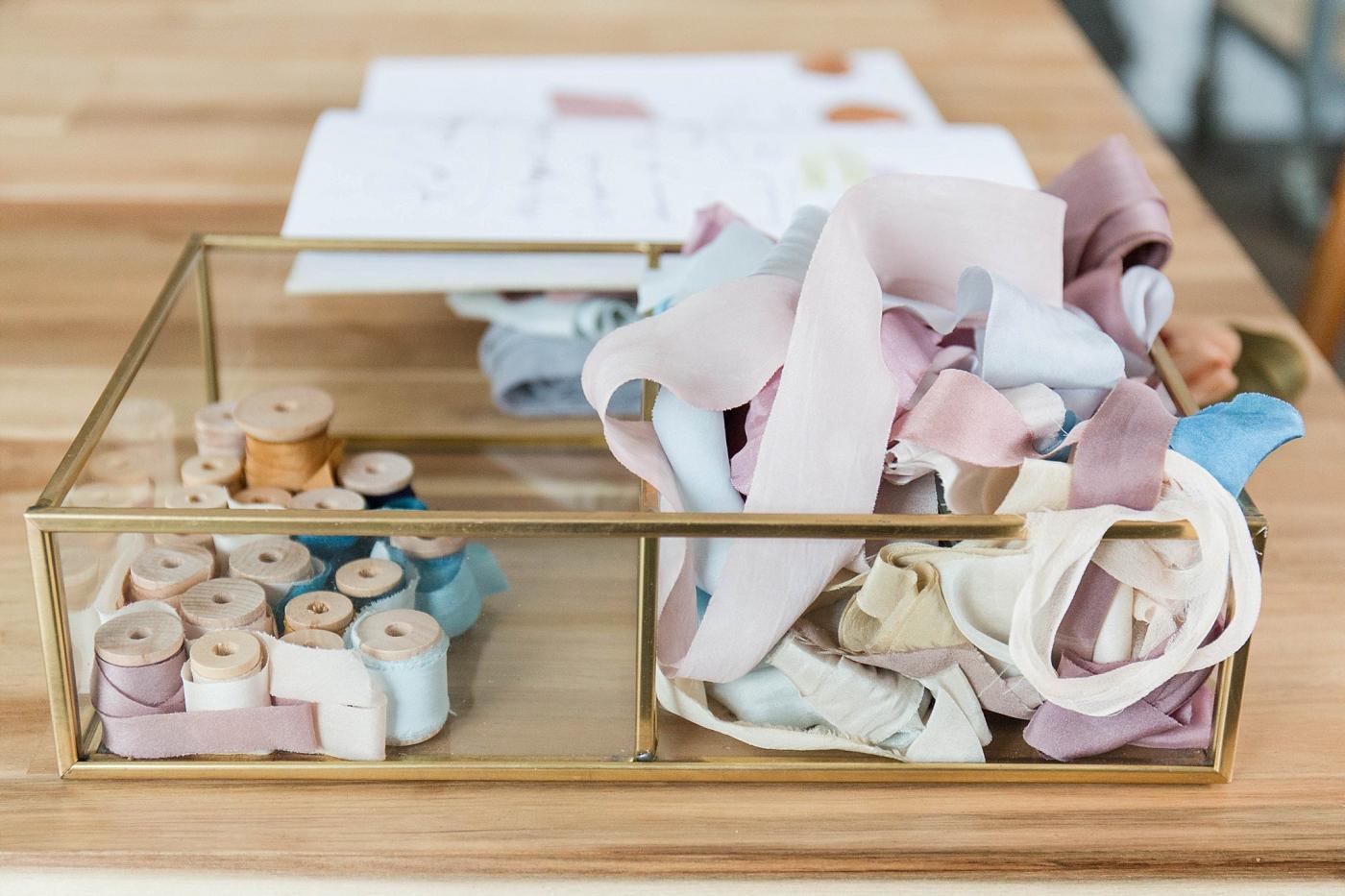
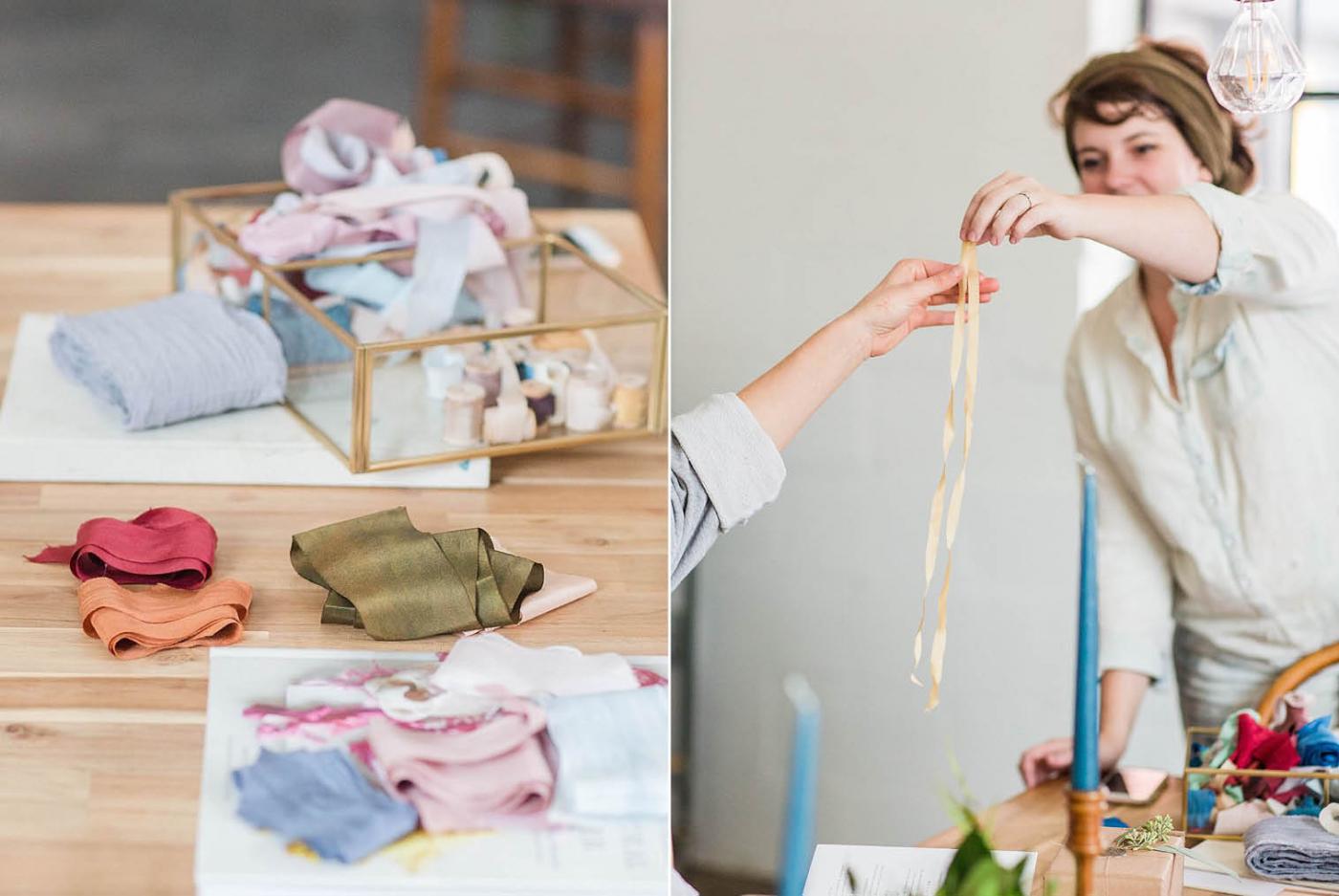
Why do you think workshops are important? What is it about bringing people together that inspires you?
The goal of this workshop was not to produce professional dye artists as these skills can take years to develop and hone to perfection. But workshops are essential for sparking interest in handmade crafts on the verge of extinction and helping people connect with one another through art. Like the calligraphy workshops I teach, students leave class with a desire to continue their study and a new passion to create with their hands. Workshops the first step to finding a new hobby and for some, a new passion.
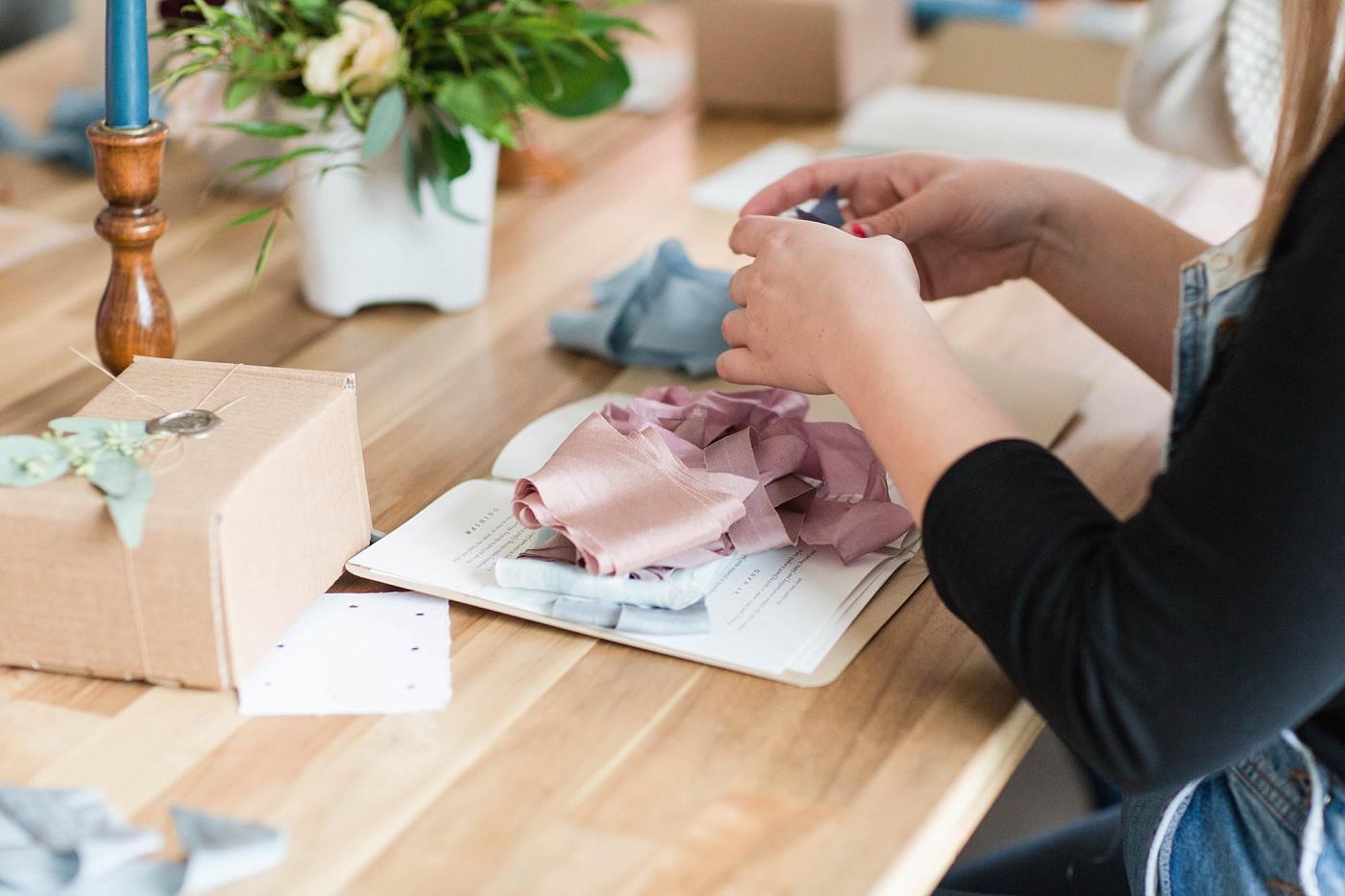
Can you share any ribbon dyeing tips? Favorite dyes, etc?
Natural dyeing can seem intimidating at first but you can create really beautiful hues with things found in your backyard or your local grocery store. My first experiment with natural dyeing began with a handful of leftover avocado pits and a pot of hot water. I recommend doing a little bit of research before you begin, spend some time collecting dye recipes from pinterest and don't be afraid fail - some of my favorite colors have come from mistakes! Secondly, KEEP A DYE JOURNAL! Don't forget to record the recipes you love, I find it helpful to keep small samples to help me remember what the final product will look like, the details matter!
I HIGHLY recommend The Modern Natural Dyer by Kristine Vejar, it is incredibly helpful for beginner dyers and will become the cornerstone of your dye recipe collection.
I am currently loving dyes extracted from blueberries. Berry dyes can be tricky, they are very sensitive to pH levels and temperatures, but they can create the most sublime stone-blue grays & taupes. Be still my heart!
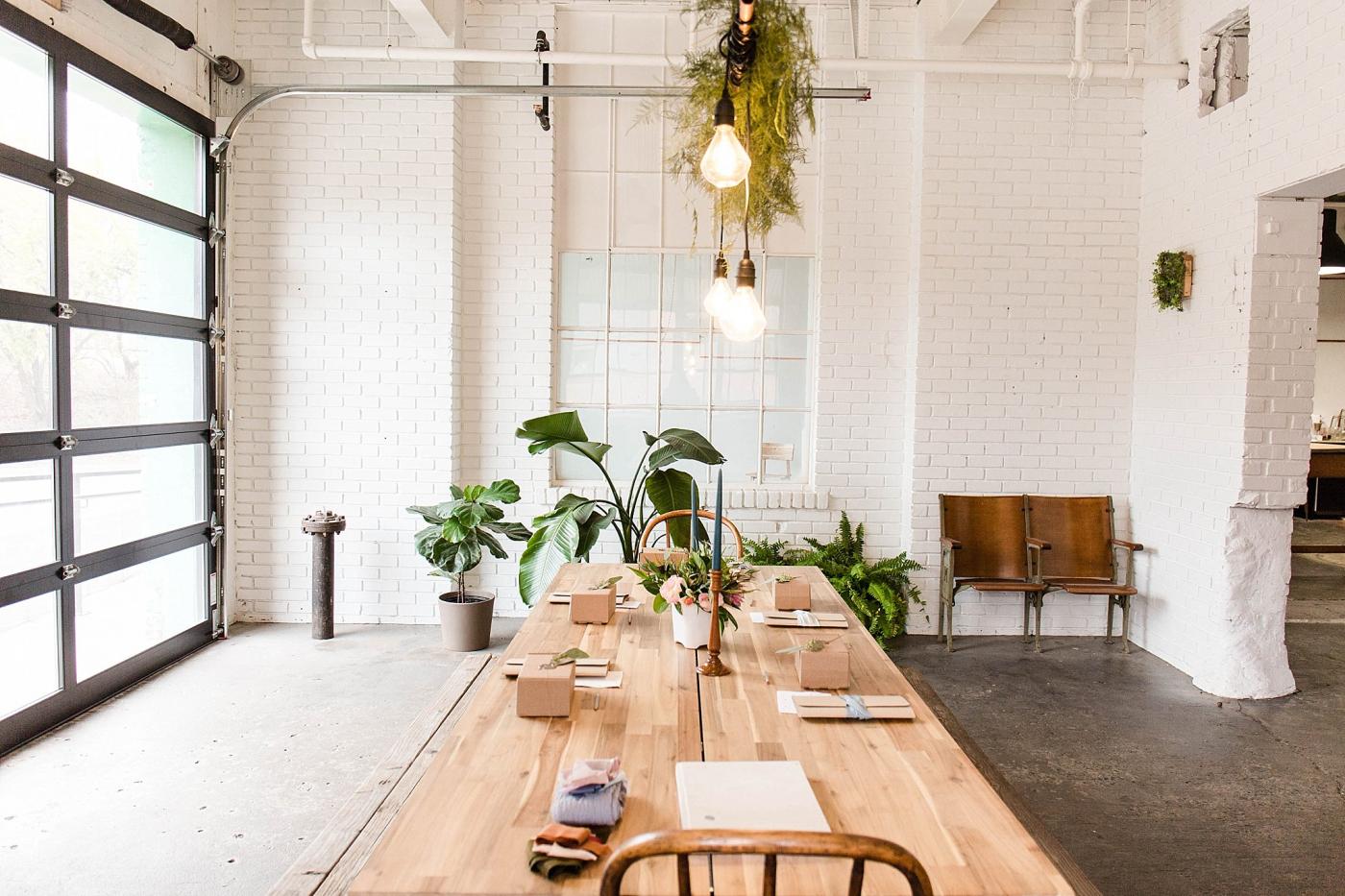
Credits
Photography: Kristin Dyer | Workshop + Calligraphy: Shasta Bell




